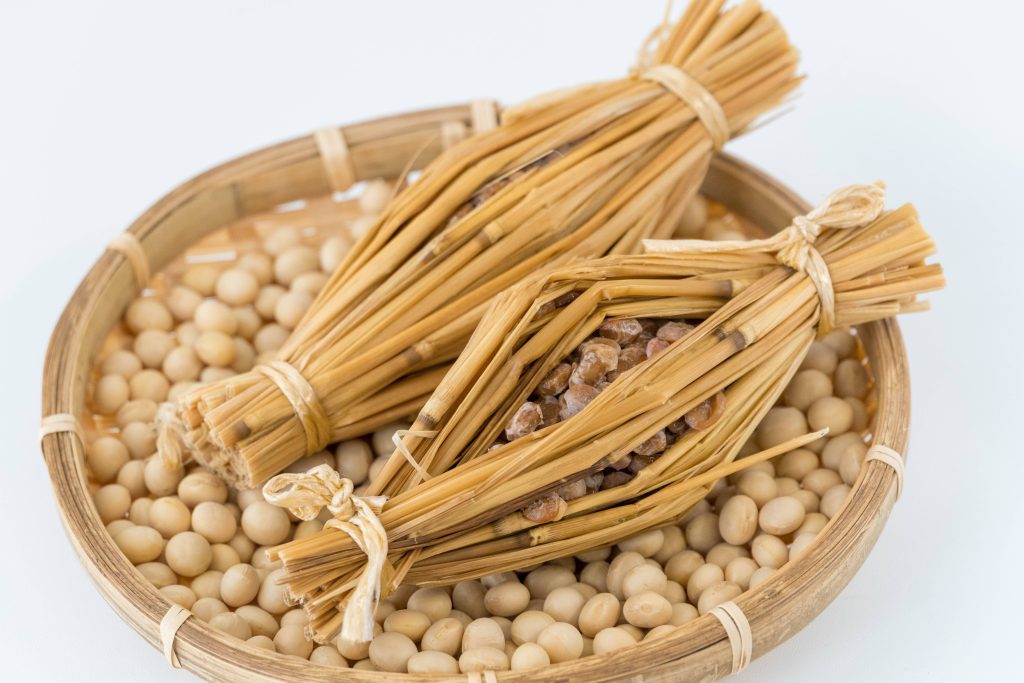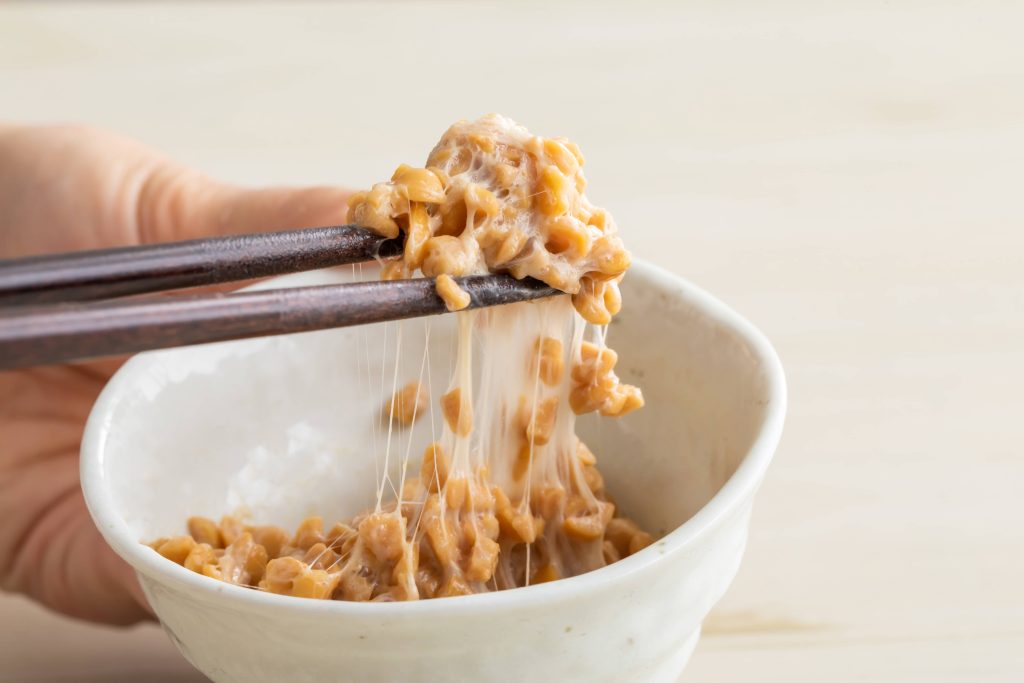Natto, a traditional Japanese food made from fermented soybeans, has been a beloved dish in Japan for centuries. Many people appreciate natto for its health benefits and unique flavor, but it’s sticky texture and savory flavor are usually an acquired taste for many. Nonetheless, natto remains a cultural staple in Japan, since it’s associated with longevity and good health. Fun fact: it’s often enjoyed first thing in the morning with breakfast! Want to learn more about this interesting superfood? Here’s everything you need to know about natto.
What is Natto?
Natto is a fermented soybean dish with a unique texture and distinct taste described as savory, nutty, and even pungent, as the fermentation process gives it a strong smell similar to cheese or soy sauce.
To make natto, soybeans are first cooked and then fermented with a special bacteria called Bacillus subtilis. The fermentation process can take anywhere from 18 to 24 hours and is typically done at a warm temperature to encourage the growth of the bacteria. During this time, the beans develop the slimy texture and unique flavor that it’s known for.
The traditional way to make natto is to cook the soybeans, mix them with natto spores, and pack them into straw bags to complete the fermentation process. This method is still used in some rural areas of Japan, but today, natto is usually made through an automated process in factories and fermentation tanks.
History of Natto and Cultural Significance
Interestingly, the history of natto isn’t exactly clear. Some theories say that it was first discovered “by accident” in northeast Japan around 1086 AD when the samurai Minamoto no Yoshiie‘s soldiers were hit with a surprise attack. It is said that as this attack happened as the soldiers were cooking their soybeans, they had to quickly pack and run, and because of this, the soybeans in their straw bags were left to ferment.
Today, natto is often served with rice, soy sauce, and mustard to enhance its flavor. It is also included in bento boxes for lunch and used as a topping or filling for sushi. It is even added to dishes like miso soup and omelets!
Natto is often associated with the concept of “neba neba,” which refers to its sticky and slimy texture. While this may be unappealing to some, it is considered a desirable quality in Japanese cuisine, as it is believed to be a sign of freshness and quality.
Health Benefits of Natto
Natto has gained a reputation as a superfood as it is rich in protein, fiber, and vitamin K2, among other nutrients and vitamins. Many people incorporate it into their diets as they believe it supports bone and cardiovascular health, on top of the fact that natto contains beneficial bacteria that aid digestion and gut health.
This healthy food also contains a variety of antioxidants that can help reduce inflammation in the body and may lower the risk of certain chronic diseases. Some studies suggest that natto helps lower cholesterol levels and reduce the risk of cardiovascular disease.
If you’re interested in trying natto, you can find it at almost any Japanese grocery store or specialty retailers online. Or, you can even try making it at home! Have you tried natto before? What do you think about its unique flavor and texture? Share your thoughts, comments, and questions with us on Twitter, Facebook, or Instagram! #Zojirushi #ZoFan






Leave a Reply